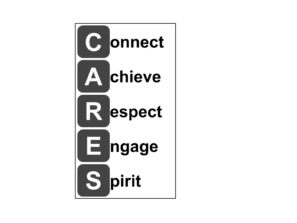

This year, a team of educators took a step towards positively changing school climate and improving student performance in various standardized tests through the implementation of the Multi-Tiered System of Support, MTSS, a nationwide framework used by schools to ensure that students receive the social needs and academic support necessary for their individual success. MTSS is system schools use to support struggling students. It is made up of three tiers. Tier one includes a student learning with a whole class. Tier two has the student receive targeted support in small group interventions. Tier three has them have intensive, individualized support. The program serves as a means for implementing helpful processes such as holistic teaching, social-emotional learning practices and disciplinary methods.
The district brought the framework to Aragon in hopes of improving student quality of life, increasing positive teacher feedback and student performance.
“Good, well-rounded students reflect teacher success,” said Giancarlo Corti, social studies teacher and district union bargaining chair. “We’ll know when MTSS is working and engaging when students are passing their classes, when they’re graduating, when they are on time to class and when chronic absenteeism rates go down. That will let you know when a student is connected to the school they attend and when our work is creating change.”
MTSS was not mandatory, San Mateo Unified High School District decided not to implement the system in 2017. Various district schools received
the results, most notably Burlingame and San Mateo High. MTSS consists of tiers that target increasing student and teacher performance, through a series of evaluations.
The group hopes to begin their work soon, but they are laying the foundation for a successful system piece by piece.
“Right now we’ve been asked [by the district] to define our core values as a school,” said Genevieve Thurtle, English teacher and MTSS member. “[We also want to] determine what those values look like in practice.”
U.S. lawmakers created MTSS in 2015. The Every Student Succeeds Act, which was passed that same year, is the foundational law that sets parameters for measuring student success using local academic assessments and implements programs and other strategies to increase achievement. This act discussed MTSS but was not implemented. Corti brings a new perspective to Aragon’s MTSS as the chair of the social studies department and bargaining chair for the teacher’s union within the district.
“Through the union lens I think about teachers and what we expect and know is doable and achievable, and from the social studies lens I think about [MTSS] historically and in terms of governance,” Corti said.
Aragon valued diversity in their selection of school representatives for Tier 1, one sector of MTSS.
This tier discusses issues that are inhibiting student achievement and is currently in place at Aragon. Aragon’s framework was announced in spring 2019, and meetings of MTSS’ first-tier began in the fall of that year.
As of now, the representatives consist of teachers and administrators.
“We wanted a math teacher, an english teacher, and [teachers of] different age groups [because] they bring a different lens to the work,” Corti said. “MTSS is trying to talk about whole school issues, so you need people who can reach all across campus and who have different subjects of expertise.”
They are working towards including parents and other community members in the future.
“Student input will show what a student experiences on a daily basis, and what messages resonate with them,” Corti said. “We need to know what they see as attainable and challenging, so we can use [that] to represent our school.”
Aragon’s branch of MTSS created an acronym to help organize their mindset when looking at this work: Aragon C.A.R.E.S., C for connect, A for achieve, R for respect, E for engages, and S for spirit. The team uses these keywords to demonstrate their hopes for what a successful school climate would look like. Their future work directly stems from these values.
“Now, our job is to consider what it looks like when students and teachers practice these values in the classroom, outside the classroom, within the school community,” Thurtle said. “Then, we’ll evaluate the programs and structures that are currently in place to see whether they uphold these set goals and values.”
MTSS relies on their values to set a precedent for what students will see in and out of the classroom.
“MTSS is here to create a cohesive, unified vision for the school,” Corti said. “When you walk on this campus, you’ll know what the school is about.”
Consistency has also been identified as an important value to include in the education process.
“If you have seven different teachers throughout the day and you’re trying to understand what it means to be a good student, a good citizen and a good person, you need one singular message to become clear,” Corti said. “That will become the foundation for everything teachers do in the classroom and make it easier for students to understand and internalize [those values].”
MTSS will continue to meet and make decisions based on their set values indefinitely.
